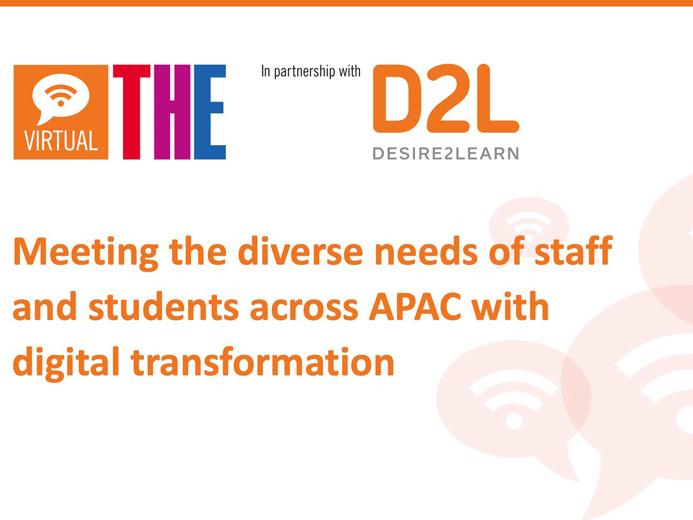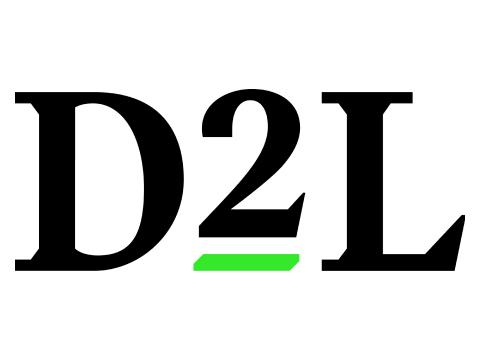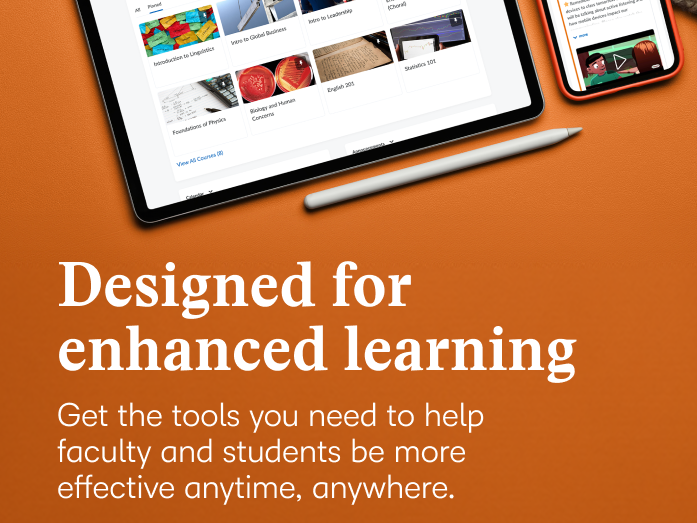
Using digital teaching tools to engage students in APAC

Technology and data alone will not be enough to connect educators and students in the Asia-Pacific, where Covid travel restrictions and campus closures are still widespread, agreed a panel of experts speaking at a Times Higher Education webinar held in partnership with D2L. The conversation was framed by findings from a survey by D2L, which asked higher education experts to share their insights on digital transformation in the sector.
“Covid has impacted students and teachers in ways undreamt of two years ago,” said Tony Maguire, D2L’s regional director for ANZ. “If we don’t find ways to build agency so that they feel a sense of control and contribution, we will fail. For all of our technology, if we don’t capture hearts and minds, we will struggle.”
Maguire referenced the D2L Brightspace learning management system, which offers “highly personalised experiences” to users, adding that institutions should embrace practical and even “off-the-ball” learning.
Nick Hutton, D2L’s regional director for Asia, said online systems had to be user-friendly for both teachers and students. “We need accessible and intuitive interfaces that are simple, with a mobile-first design,” he said.
Rogelio Dela Cruz Jr., director of the Centre for Educational Technology at De La Salle-College of Saint Benilde in the Philippines, spoke candidly of the unexpected challenges his institution faced when Covid first closed classrooms.
“We were not ready for the scale and scope of the pandemic and how it changed everything,” Dela Cruz said. “Digitising content is one thing. Creating quality digital content is another.”
His institution drew on the expertise of its art and design school to embed animation and film into online content. As well as finding innovative means to reach students, educators are also conscious of the need to connect on a personal level. “Students are yearning for a more intimate, meaningful way of communication,” Dela Cruz said.
Manojkumar Nagasampige, director of the directorate of online education at the Manipal Academy of Higher Education in India, said feedback about student behaviour was even more important in online education. “Data analytics are essential,” he said. “How much time are the students spending on a video or reading? Can these students cope with the objectives?”
Manojkumar Nagasampige cited solutions such as digital “bulletin boards” for learners suffering from feelings of isolation, as well as shorter lectures and pop quizzes to keep students engaged. “If a learner is not taking the quizzes, you can try to find ways to motivate them,” he said. “Are they slow learners or advanced learners? If they are the former, how can we help them?”
He also said tablets and mobile phones were crucial to reaching those in areas with low internet connectivity, while “remote labs” could help engineering students who could not travel to campus.
Manojkumar Nagasampige stressed that “higher education institutions are at different points in their journey”. “Start slow, take baby steps, use the tools you’re familiar with rather than trying to jump in,” he recommended.
Liz Johnson, deputy vice-chancellor of education at Deakin University in Australia, had similar advice.
“Choose your tools carefully. Choose the ones that teachers are the most familiar with – the ones [students] will use in their jobs – and embed them throughout your teaching,” she said.
Johnson said communications should be “frequent, friendly and tailored” – and that students did notice the little things. For example, Deakin uses personalised portals for in-person and online students so that someone studying remotely won’t be bombarded with irrelevant campus news. “Those small things help student believe and have confidence that the institution cares,” she said. “All teaching is based on relationships.”
The final goal, she emphasised, was to “build digital fluency” instead of using technology for technology’s sake.
The panel:
- Rogelio Dela Cruz Jr., director of the Centre for Educational Technology, De La Salle-College of Saint Benilde
- Nick Hutton, regional director for Asia, D2L
- Liz Johnson, deputy vice-chancellor of education, Deakin University
- Joyce Lau, journalist, Times Higher Education (chair)
- Tony Maguire, regional director for ANZ, D2L
- Manojkumar Nagasampige, director of the directorate of online education, Manipal Academy of Higher Education
Watch the webinar on demand above or on the THE Connect YouTube channel.
Find out more about D2L's survey findings and learn about the digital transformation journey that organisations have embarked on across the APAC region.


